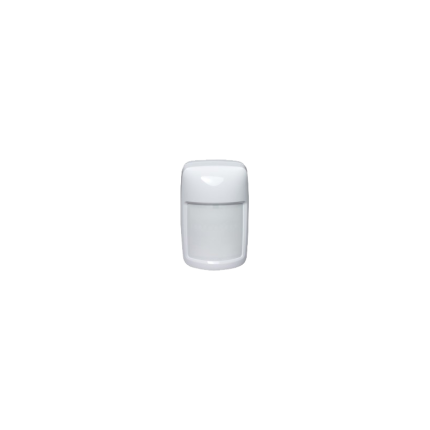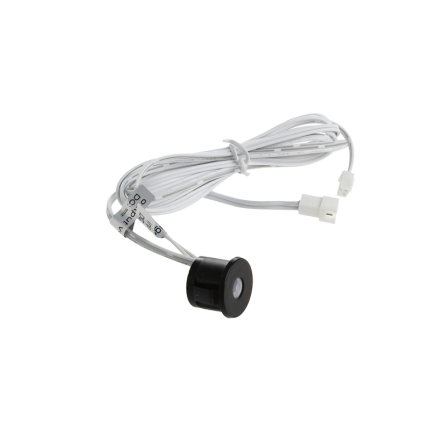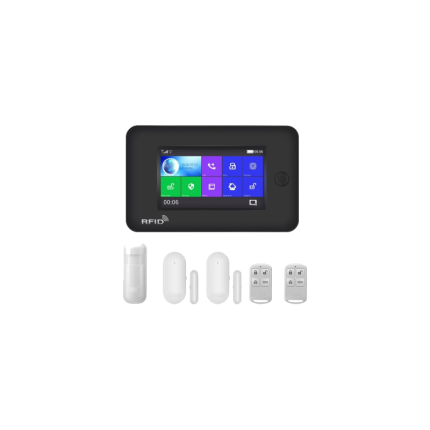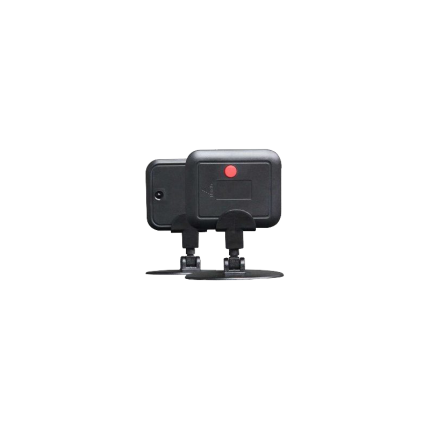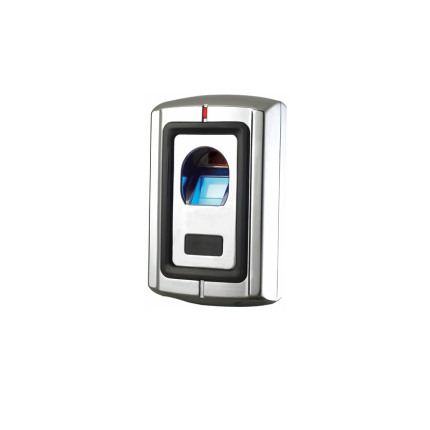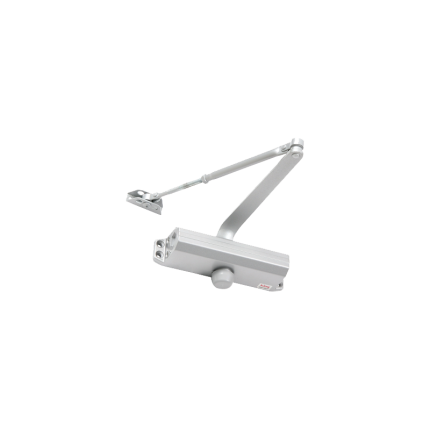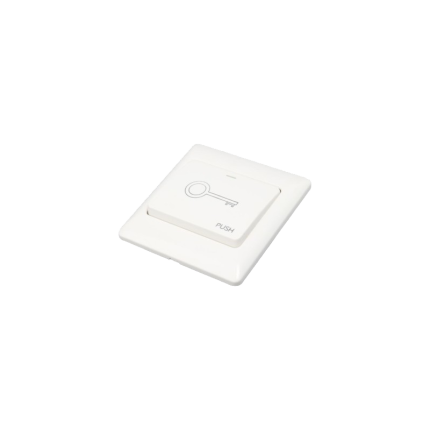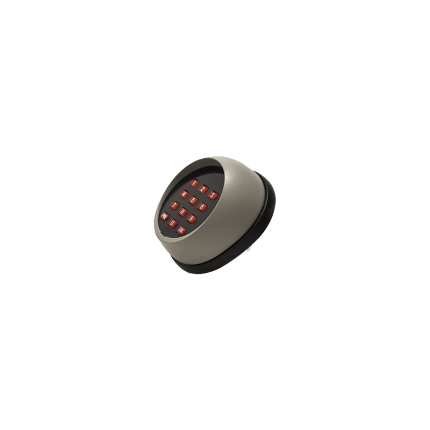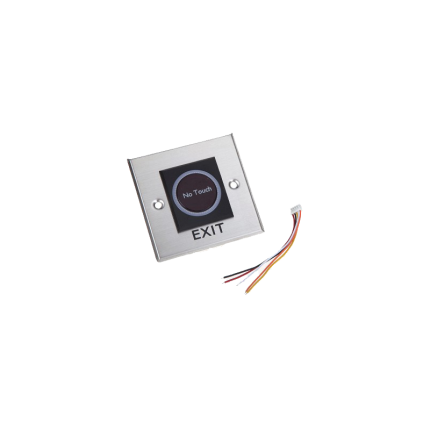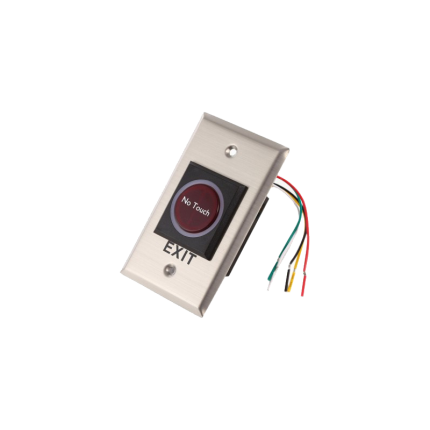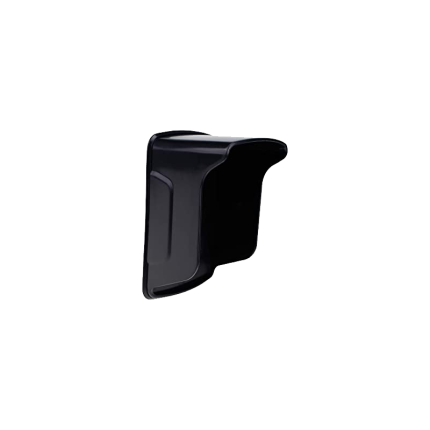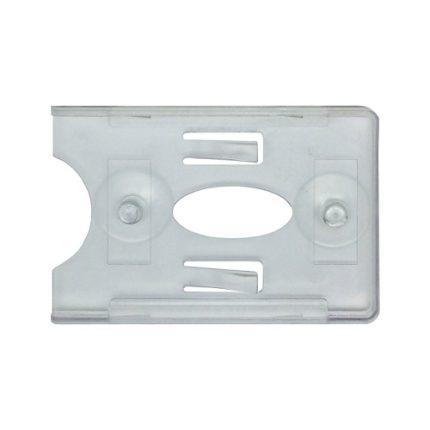Shop
PIR Infrared Sensor – wired
Ship or pick up from our office.
PIR Infrared Sensor – wired
A PIR (Passive Infrared) sensor is an electronic sensor that detects infrared (IR) light radiating from objects within its field of view. It's called "passive" because it doesn't emit any energy itself; instead, it passively monitors the existing infrared radiation in its surroundings. All objects with a temperature above absolute zero emit some level of infrared radiation, and the hotter an object, the more radiation it emits. PIR sensors are particularly effective at detecting the infrared radiation emitted by warm bodies, such as humans and animals. How PIR Sensors Work At the core of a PIR sensor is a pyroelectric sensor, a material that generates an electrical charge when exposed to changes in infrared radiation. To detect motion, most PIR sensors use a dual-sensor design:- Dual Elements: The pyroelectric sensor is typically divided into two halves or elements, wired in a way that they cancel each other out when no motion is detected. This means that if both halves receive the same amount of IR radiation (e.g., from the ambient room temperature), their signals balance, and no output is generated.
- Fresnel Lens: A Fresnel lens is often placed in front of the pyroelectric sensor. This special lens has multiple facets that help to focus infrared light from different angles onto the sensor elements, increasing its range and sensitivity, and creating distinct detection zones.
- Motion Detection: When a warm object, like a person, moves across the sensor's field of view, it first enters one detection zone (and thus one half of the pyroelectric sensor) and then the other. This causes a differential change in the amount of infrared radiation impinging on each half of the sensor. This difference in IR energy between the two halves creates an electrical signal.
- Signal Processing: The sensor's internal circuitry processes this change in voltage. If the change is significant enough (indicating a "moving heat source"), the sensor triggers an output signal.
- Security Systems: The PIR infrared sensor are a fundamental component of burglar alarms and motion-activated security cameras, detecting intruders by their body heat.
- Automatic Lighting: PIR infrared sensors are used in homes, offices, and public spaces to automatically turn lights on when someone enters a room or area and off when it's unoccupied, leading to energy savings.
- Smart Home Automation: The PIR infrared sensor play a crucial role in smart homes, triggering various automated actions like adjusting thermostats, turning on appliances, or opening doors based on occupancy.
- Automatic Doors: Many automatic door systems, like those found in shopping malls, use PIR sensors to detect approaching individuals and open the doors.
- Industrial Monitoring: They can be used to monitor machinery movement or detect the presence of personnel in hazardous areas for safety purposes.
- Wildlife Tracking and Research: Researchers use them to monitor animal movements unobtrusively.
Infrared PIR Motion Sensor Switch
Ship or pick up from our office.
Infrared PIR Motion Sensor Switch
An Infrared PIR Motion Sensor Switch is an electronic device that detects movement by sensing changes in infrared (IR) radiation in its field of view. "PIR" stands for Passive Infrared, meaning it doesn't emit any energy itself but rather passively monitors the infrared radiation given off by objects. 🌡️ How it Works At the core of a PIR sensor is a pyroelectric sensor, which is sensitive to heat (infrared radiation). Most PIR sensors have two halves, or "slots," wired in a differential arrangement. Here's a simplified breakdown of its operation:- Idle State: When there's no movement, both halves of the sensor detect the same amount of ambient infrared radiation from the surroundings.
- Motion Detection: When a warm object, like a human or animal, moves into the sensor's field of view, it first intercepts one half of the sensor, creating a temporary difference in the infrared radiation detected by the two halves. This difference generates a voltage pulse.
- Signal Processing: The sensor's circuitry processes this voltage pulse. If the change is significant and matches the pattern of a moving heat source, the sensor triggers an output signal.
- Fresnel Lens: A key component of a PIR sensor is the Fresnel lens . This specially designed plastic lens focuses infrared radiation from different angles onto the pyroelectric sensor, effectively dividing the detection area into multiple sensitive zones. This allows the sensor to have a wider field of view and detect movement more effectively.
- Automatic Lighting Control: This is one of the most common applications. PIR sensors turn lights on when someone enters a room, hallway, or outdoor area and turn them off after a set period of no motion, saving energy.
- Security Systems: They are integral to security alarms, detecting intruders and triggering alerts or security cameras.
- Smart Home Systems: PIR sensors play a role in smart homes for automating various functions, from lighting and HVAC systems to controlling appliances based on occupancy.
- Automatic Doors: In public buildings, they detect approaching individuals to automatically open doors.
- Energy Management: By ensuring that lights, HVAC, and other devices only operate when an area is occupied, PIR sensors contribute significantly to energy savings in residential and commercial settings.
- Wildlife Tracking and Research: Researchers use them to monitor animal movements without disturbance.
Home Alarm System – WIFI SX1
Ship or pick up from our office.
Home Alarm System - WIFI SX1
Included: *Wireless/Wired Zones *WiFi network, support APP push/SMS/Voice, such as different alarm channels *Multi-language menu, Touch screen display *2 x ON/Off Remote control *2 x Wireless magnetic sensor *1 x Wireless PIR Infrared Sensor The "Home Alarm System - WIFI SX1" appears to refer to a specific type of DIY-friendly, wireless home security system that leverages both Wi-Fi and 4G connectivity for enhanced reliability. While specific manufacturers might produce variations, the general characteristics of an SX1 system include: Key Features and Functionality:- Wireless and DIY Installation: Designed for easy setup without complex wiring or professional installation, often using double-sided adhesive tape for sensors.
- Wi-Fi and 4G Connectivity: This is a core feature, allowing remote monitoring and control via a smartphone app (e.g., SmartHome Security app, Nexxt Home app, X-Sense Home Security app, or generic Tuya Smart/Smart Life app). The 4G acts as a backup in case of Wi-Fi outages, ensuring continuous protection.
- Battery Backup: A built-in lithium battery (often 3.7V/900mA, providing about 12 hours of backup) ensures the system remains operational during power failures.
- Expandability: These systems are typically expandable, allowing users to add numerous sensors (e.g., up to 50 or 99 sensors and 10 remote controls) to cover various areas of their home or office.
- Variety of Sensors: Common sensors include:
- Door/window contact sensors
- Motion detectors (often pet-immune)
- Smoke and carbon monoxide detectors
- Flood sensors
- Glass break sensors
- Loud Siren: An integrated siren (often around 110-120dB) sounds to alert occupants and deter intruders.
- Real-time Notifications: Users receive instant alerts to their smartphones via the app when an alarm is triggered, a sensor detects activity, or there's a low battery or power loss.
- Customization: The ability to name sensors and remote controls for easier identification.
- Smart Home Integration: Many SX1 systems are compatible with popular smart home platforms like Amazon Alexa, Google Home, and IFTTT, allowing for voice control and integration into broader home automation routines.
- Auto-dialing and SMS Alerts: The system can often be configured to automatically dial pre-programmed numbers and send SMS alerts in case of an alarm.
- Professional Monitoring (Optional): While often a DIY system, some providers or versions might offer optional professional monitoring services for 24/7 security team response.
- Affordability: Often seen as a cost-effective security solution, especially with no mandatory monthly fees (though professional monitoring may incur fees).
- Ease of Use: User-friendly mobile apps and straightforward installation.
- Flexibility: Easily expandable and adaptable to various home or office sizes and security needs.
- Peace of Mind: Home alarm system - WIFI SX1, provides continuous monitoring and alerts, even when away from home.
- Setup Challenges: Some users have reported initial setup difficulties due to unclear instructions or issues with sensor reliability.
- Sensor Reliability: Occasional reports of inconsistent sensor performance or false alarms.
- Wi-Fi Dependency: While 4G provides backup, a stable 2.4 GHz Wi-Fi network is typically required for initial setup and full functionality.
- App Performance: While generally praised, some apps can have occasional freezing or delayed alert issues.
Infrared Card
Ship or pick up from our office.
Infrared Card
An Infrared Card, also known as an infrared detection card or laser viewing card, is a tool used to visualize infrared light, typically from lasers or other sources, by converting it into a visible light display. It's a simple, low-cost way to check for the presence and position of infrared beams, making it useful for alignment, safety, and diagnostic purposes.
Here's a more detailed explanation:
What it does:
-
Converts invisible IR light to visible light:The card contains a material, often phosphorescent, that absorbs infrared radiation and then emits visible light when stimulated.
-
Indicates presence and location:The illuminated spot on the card shows where the infrared beam is hitting, making it easy to see the beam's path and focal point.
-
Used for various applications:Infrared cards are used for aligning lasers, checking for infrared light leakage, visualizing infrared beams from various sources, and ensuring safety by detecting potentially harmful IR radiation.
Fingerprint Access Control
Ship or pick up from our office.
Fingerprint Access Control
A fingerprint access control system is a security system that uses an individual's unique fingerprint to grant or deny access to a physical space (like a building or a room) or a digital system. It's a type of biometric access control, which relies on distinct biological traits for identification. How it Works The process generally involves two main steps:- Enrollment: When a user is first set up in the system, a fingerprint scanner captures an image of their fingerprint. This image is then converted into a digital template (a mathematical code, not an actual image) and securely stored in a database. This template represents the unique characteristics of that person's fingerprint, such as ridge endings and bifurcations.
- Verification: When someone tries to gain access, they place their finger on the scanner again. The system captures a new image, converts it into a template, and then compares it to the stored template in the database. If there's a match, access is granted; otherwise, it's denied. This entire process is typically very fast.
- Fingerprint Reader/Scanner: The device that captures the fingerprint image.
- Communication Network: To transmit the captured data to the database.
- Database: Where the digital fingerprint templates are stored.
- Management Software: For administering users, permissions, and logging access events.
- Electronic Door Locks: Locks that are controlled by the system, opening when access is granted.
- Power Supply: To power all the system components.
- Enhanced Security: Fingerprints are unique to each individual and are extremely difficult to replicate or steal, making them more secure than traditional keys, cards, or PINs.
- Convenience: Users don't need to carry keys or remember codes, as their fingerprint is always with them.
- Improved Accountability: Every access event is tied to a specific individual, creating clear and accurate audit trails.
- Reduced Risk of Lost/Stolen Credentials: There are no physical keys or cards to be lost, stolen, or shared.
- Cost-Effective in the Long Run: While there might be an initial investment, it can save money by eliminating the need for replacing lost cards or rekeying locks.
- Physical Contact Required: Most fingerprint scanners require direct contact, which can be a hygiene concern and may not work if fingers are dirty, wet, or injured.
- Potential for Recognition Issues: Scars, calluses, or even minor cuts can sometimes make it difficult for the system to recognize a fingerprint, leading to false rejections.
- Enrollment Time: Registering each user's fingerprint can be time-consuming in large organizations.
- Spoofing Concerns: While difficult, advanced techniques could potentially "spoof" a fingerprint. Modern systems often include "liveness detection" to counter this.
- Not Ideal for Visitors: It's not practical to enroll temporary visitors for short-term access.
- Optical Scanners: Capture a visual image of the fingerprint using light.
- Capacitive Scanners: Use electrical current to create an image of the fingerprint's ridges and valleys.
- Ultrasonic Scanners: Use sound waves to create a 3D map of the fingerprint.
- Thermal Scanners: Detect temperature differences between the ridges and valleys.
- Touchless Fingerprint Readers: Some newer systems allow for contactless scanning, often using 3D imaging of multiple fingers.
Door closer -DCL061
Ship or pick up from our office.
Door closer -DCL061
The "Door closer -DCL061" appears to refer to a specific model of door closer, primarily offered by Royal Electronics Technology Center Co. Based on the information found, here's what we know about it:- Type: DCL061 is a mechanical door closer.
- Capacity: Door closer -DCL061 has a capacity of 45 Kg, indicating it's suitable for doors up to that weight.
- Dimensions: Door closer -DCL061 dimensions are 25 × 9 × 9 cm.
- Purpose: Like all door closers, it's designed to automatically close a door in a controlled manner after it has been opened. This serves various purposes, including:
- Security: Ensuring doors are not left open inadvertently.
- Fire Safety: Crucial for fire doors to prevent the spread of fire and smoke.
- Energy Efficiency: Helping to maintain indoor temperatures by ensuring doors close properly.
- Accessibility and Safety: Preventing doors from slamming, reducing the risk of injury, and allowing controlled passage for individuals with limited mobility.
Wireless Keypad Access Control – ALEKO LM172
Ship or pick up from our office.
Wireless Keypad Access Control – ALEKO LM172
-Rain Shield Cover included *Backlight *433 MHz The ALEKO LM172 is a wireless keypad access control system primarily designed for use with ALEKO brand swing and sliding gate openers. It provides a secure and convenient way to control access to a property by requiring users to enter a programmable 6-digit code. Key Features & Specifications- Wireless Operation: It's completely wireless, eliminating the need for electrical connections to the gate opener. It operates on 3 AAA batteries.
- Frequency: It uses a 433.92 MHz frequency for communication with compatible gate openers.
- Security: Enhances security by restricting access to authorized individuals who know the programmable 6-digit code, reducing reliance on traditional remote controls.
- Durability: Features a rugged metal construction designed to withstand various weather conditions. Some listings mention heavy-duty iron construction.
- Visibility: Equipped with backlit keys for easy use in low-light conditions.
- Compact Design: Has a relatively compact profile (approx. 3.5"L x 3.25"W x 1"D or 4" x 3" x 3").
- Range: Offers a typical operating range of up to 32 feet (10 meters) from the gate opener's receiver. It's recommended to install it within 5 meters (16 feet) of the control box on the same side of the driveway to avoid interference.
- Installation: Designed for easy installation, typically mounted with screws. It can be buried in the ground or fixed on the ground with a compatible mounting post.
- ALEKO Swing Gate Openers: AS/GG Series (e.g., AS450, AS600, AS650, AS900, AS1200, AS1300, AS1700 models).
- ALEKO Sliding Gate Openers: AR/AC Series (e.g., AR900, AR1300, AR1800, AR2200, AR2700, AR5700, AC1300, AC1800, AC2200, AC2700, AC5700 models).
- LockMaster Gate Openers: LM901 and LM902 Swing Gate Openers.
- DSC DSR SCG/SFG (H model only) Sliding Gate Openers: Purchased after July 2011.
- Powering on the control board and ensuring it's in standby mode.
- Pressing a "LEARN" button on the control board.
- Pressing the "OK" button on the LM172 keypad to link it with the gate opener.
- Once successfully learned, the control board's LED will indicate confirmation.
Rain Shield Cover
Ship or pick up from our office.
Rain Shield Cover
Common Applications:
-
Doorbell systems:Protects the doorbell from rain and sun, ensuring it remains functional and visible.
-
Keypad access control systems:Shield the keypad from the elements, preventing malfunctions and ensuring accurate operation.
-
Fingerprint access control systems:Protects the fingerprint sensor from rain and sun exposure, ensuring accurate biometric readings.
-
Standalone RFID door access controllers:Shield the controller from weather elements, ensuring reliable access control.
-
Attendance machines:Protects the machine from rain and sun, ensuring accurate timekeeping records.
Card Holder
Ship or pick up from our office.
Card Holder
A UHF/RFID card holder is a specialized enclosure designed to hold and protect UHF (Ultra-High Frequency) RFID cards, often used for access control, vehicle identification, and logistics.
These holders typically consist of a durable material with a slot or pocket to securely accommodate the card, and may feature a mounting mechanism like suction cups for windshield attachment.
They enable convenient and reliable use of UHF RFID cards in various applications, such as parking systems, building access, and asset tracking, by providing a designated place for the card and facilitating easy scanning by RFID readers.

